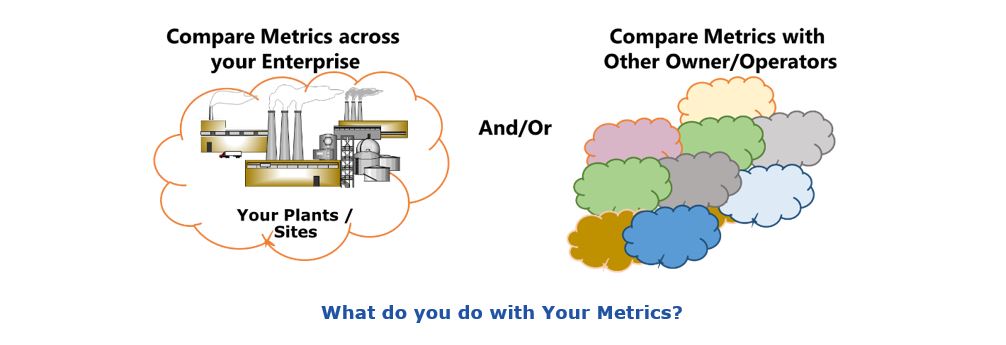

To understand where you need to go to optimize your manufacturing, you need to first know where you are. Plant performance benchmarking can play an important role in your Digital Transformation plans. New benchmarking concepts are being developed that, ultimately, will benefit all users of operational technology. It is becoming clear that these metrics are not just confined to the “cost” or “efficiency” side of the equation, but also to production effectiveness. Both the effectiveness and cost/efficiency perspectives are required to expose automation's rightful place as a key "profit maker" for manufacturing operations.
It is time for automation to be viewed as a key profit maker for manufacturing operations. Most manufacturers would agree that without automation it would be virtually impossible to run their operations. And without automation running effectively, it would be impossible to achieve their current level of profitability, let alone improve it.
Effective benchmarking within an expanded universe of peer organizations could provide Operation Technology (OT), Information Technology (IT), and operations groups in manufacturing with hard data to support the current and potential contributions that advanced automation and other IT/OT technologies could make to the overall profitability of the business. In this manner, benchmarking could help justify sustaining and/or increasing IT/OT-related investments.

If they exist at all, OT and automation metrics within a given manufacturing organization (“inside the box”), typically focus on the cost side of the business equation. Often the metrics are aimed at automation itself. For example, how many people are needed to maintain the automation assets this year versus last year?
Using metrics carefully defined within a consortium of peer manufacturing organizations, a company can expand its view of what is achievable through more “outside the box” thinking. Sometimes, automation metrics can be applied to their impact on other costs, such as energy usage, first quality production, or unit/line availability. These are always more difficult to assess, since other factors can have an impact on overall cost.
Efficiency or cost-reduction metrics are necessary, but not sufficient to see the full impact of automation. After more than a decade of cost reductions, the specific impacts of further reductions on operating effectiveness or business value need to be questioned. For example, what is the proper level of automation support (engineering and maintenance) in a production facility? If you only look at the cost side of the equation, the answer is to take out all cost not absolutely required to maintain your current level of automation. But the question here is, even if it’s operating “correctly,” is your current level of automation adequate to enable you to meet ever-changing customer requirements while operating the plant safely, reliably, and profitably.
There is no doubt that properly formulated metrics can help a plant determine if there is improvement year-over-year. A manufacturer can gain definite insights by instituting a metrics-based evaluation system for automation and IT/OT. Knowing both the efficiency of your automation investment as well as its contribution to business effectiveness can guide your investment plans, particularly in this era of digital transformation.
ARC believes that, while there is value to a consistent metric-based view of your own operation, there is an added benefit to be able to compare yourself to others. This is where industry benchmarking comes in. For example, knowing what others are doing with regard to the service factor for their installed automation technologies can help you determine if you are in line with the industry norm.
One of the keys to effective cross-industry benchmarks is determining the proper denominator for the metric equation. For example, if one were to compare two chemical plants, one factor in the comparison is the relative size. From an automation point of view, this denominator issue might be satisfied by knowing the number of I/O points, which provides an indication of the relative size of the automation installation. By dividing the number of field service support personnel by the num-ber of I/O, a small plant could compare itself with a larger one on more-or-less balanced terms.
The type and complexity of a plant are additional considerations. For example, comparing a plant with predominantly batch processes to a predominantly continuous process plant could lead to faulty conclusions. Relative plant and process complexity must also be considered when developing meaningful, cross-company benchmarking metrics for automation and other IT/OT applications.
The important thing is to look at benchmark metrics in a balanced way. For example, looking at support hours in isolation might lead to faulty thinking such as, "less support hours are better." One would have to look at other factors to determine if the effectiveness of your IT/OT support program is producing the correct economic benefits.
All manufacturers and other industrial organizations need to look at their current operational technology investment and future digital transformation investments in light of both effectiveness and efficiency. Efficiency needs to be measured and tracked, but automation efficiencies need to be evaluated on the basis of their overall contribution to plant operational and business effectiveness.
Benchmarking your automation metrics against peer organizations can expose deficiencies as well as excellence in your automation strategies. These benchmarks can provide helpful data points when evaluating automation in terms of overall business value created.
Manufacturers should consider participating in ARC's Benchmarking Consortium. There is no additional charge for ARC Advisory Group Manufacturing Advisory Service Clients to do so. But in addition, ARC has made it possible for all manufacturers to begin the benchmarking journey by our no-cost “Getting Started with Manufacturing Plant Performance Benchmarking” program. Check it out. We would like to hear from you.

